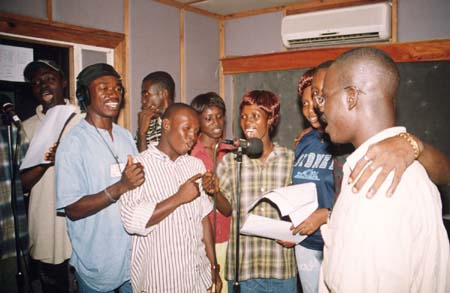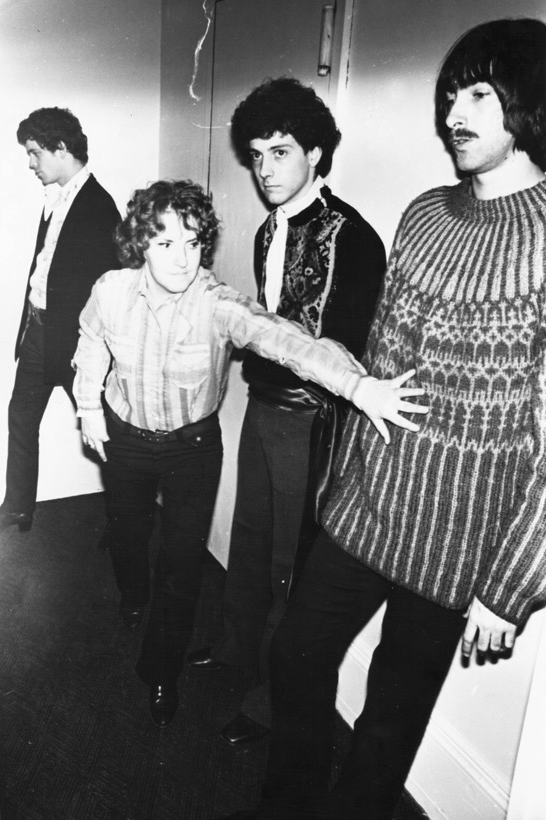|
Say So (album)
''Say So'' is the third studio album by American art rock band Bent Knee. It's the band's only record to be published by Cuneiform Records. Track listing Personnel *Ben Levin – guitar, vocals *Chris Baum – violin, vocals *Courtney Swain – lead vocals, keyboards *Gavin Wallace-Ailsworth – drums *Jessica Kion – bass, vocals *Vince Welch – synths, sound design, production Additional personnel * Andy Bergman – alto saxophone, clarinet * Ben Swartz – cello * Bryan Murphy – trumpet * Geni Skendo – flute, shakuhachi * Geoff Nielsen – trombone * James Dineen – voice acting * Keith Dickerhofe – cello * Nathan Cohen – violin * Sam Morrison – baritone saxophone * Rebecca Hallowell – viola The viola ( , also , ) is a string instrument that is bow (music), bowed, plucked, or played with varying techniques. Slightly larger than a violin, it has a lower and deeper sound. Since the 18th century, it has been the middle or alto voice of ... Reference ... [...More Info...] [...Related Items...] OR: [Wikipedia] [Google] [Baidu] |
Bent Knee
Bent Knee is an American art rock band formed in Boston, Massachusetts, in 2009. The band performs in multiple genres and draws from multiple influences, including pop, industrial rock, progressive rock, and avant-garde. The band is known for unpredictable dynamic contrast and the wide vocal range of singer Courtney Swain. Bent Knee has toured with The Dillinger Escape Plan, Haken, Leprous, Thank You Scientist, and Mike Keneally. In 2016, they signed to Cuneiform Records for the release of their third album, ''Say So''. In 2017, they signed a deal with Inside Out Music and released their fourth album, ''Land Animal''. History Bent Knee was formed at the Berklee College of Music in 2009, when guitarist Ben Levin and vocalist Courtney Swain began writing music together. The band's name is a compound of the founders' names ("Ben" + "ourney"). The band self-released their first LP, ''Bent Knee'' in 2011, then self-released their follow-up, ''Shiny Eyed Babies'' in 2014. In late ... [...More Info...] [...Related Items...] OR: [Wikipedia] [Google] [Baidu] |
Production (music)
A record producer is a recording project's creative and technical leader, commanding studio time and coaching artists, and in popular genres typically creates the song's very sound and structure.Virgil Moorefield"Introduction" ''The Producer as Composer: Shaping the Sounds of Popular Music'' (Cambridge, MA & London, UK: MIT Press, 2005).Richard James Burgess, ''The History of Music Production'' (New York: Oxford University Press, 2014)pp 12–13Allan Watson, ''Cultural Production in and Beyond the Recording Studio'' (New York: Routledge, 2015)pp 25–27 The record producer, or simply the producer, is likened to film director and art director. The executive producer, on the other hand, enables the recording project through entrepreneurship, and an audio engineer operates the technology. Varying by project, the producer may or may not choose all of the artists. If employing only synthesized or sampled instrumentation, the producer may be the sole artist. Conversely, some artists ... [...More Info...] [...Related Items...] OR: [Wikipedia] [Google] [Baidu] |
2016 Albums
The following is a list of albums, EPs, and mixtapes released in 2016. These albums are (1) original, i.e. excluding reissues, remasters, and compilations of previously released recordings, and (2) notable, defined as having received significant coverage from reliable sources independent of the subject. For additional information about bands formed, reformed, disbanded, or on hiatus, for deaths of musicians, and for links to musical awards, see 2016 in music. First quarter January February March Second quarter April May June Third quarter July August September Fourth quarter October November December References {{Albums by release date Albums An album is a collection of audio recordings issued on compact disc (CD), vinyl, audio tape, or another medium such as digital distribution. Albums of recorded sound were developed in the early 20th century as individual 78 rpm records coll ... 2016 ... [...More Info...] [...Related Items...] OR: [Wikipedia] [Google] [Baidu] |
Viola
The viola ( , also , ) is a string instrument that is bow (music), bowed, plucked, or played with varying techniques. Slightly larger than a violin, it has a lower and deeper sound. Since the 18th century, it has been the middle or alto voice of the violin family, between the violin (which is tuned a perfect fifth above) and the cello (which is tuned an octave below). The strings from low to high are typically tuned to scientific pitch notation, C3, G3, D4, and A4. In the past, the viola varied in size and style, as did its names. The word viola originates from the Italian language. The Italians often used the term viola da braccio meaning literally: 'of the arm'. "Brazzo" was another Italian word for the viola, which the Germans adopted as ''Bratsche''. The French had their own names: ''cinquiesme'' was a small viola, ''haute contre'' was a large viola, and ''taile'' was a tenor. Today, the French use the term ''alto'', a reference to its range. The viola was popular in the heyd ... [...More Info...] [...Related Items...] OR: [Wikipedia] [Google] [Baidu] |
Baritone Saxophone
The baritone saxophone is a member of the saxophone family of instruments, larger (and lower-pitched) than the tenor saxophone, but smaller (and higher-pitched) than the bass. It is the lowest-pitched saxophone in common use - the bass, contrabass and subcontrabass saxophones are relatively uncommon. Like all saxophones, it is a single-reed instrument. It is commonly used in concert bands, chamber music, military bands, big bands, and jazz combos. It can also be found in other ensembles such as rock bands and marching bands. Modern baritone saxophones are pitched in E. History The baritone saxophone was created in 1846 by the Belgian instrument maker Adolphe Sax as one of a family of 14 instruments. Sax believed these instruments would provide a useful tonal link between the woodwinds and brasses. The family was divided into two groups of seven saxophones each, from the soprano to the contrabass. Though a design for an F baritone saxophone is included in the C and F family ... [...More Info...] [...Related Items...] OR: [Wikipedia] [Google] [Baidu] |
Voice Acting
Voice acting is the art of performing voice-overs to present a character or provide information to an audience. Performers are called voice actors/actresses, voice artists, dubbing artists, voice talent, voice-over artists, or voice-over talent. Voice acting is recognised as a specialized dramatic profession in the United Kingdom, primarily due to BBC broadcasts of radio drama production. Examples of voice work include animated, off-stage, off-screen or non-visible characters in various works such as feature films, dubbed foreign-language films, animated films, anime, television shows, video games, cartoons, documentaries, commercials, audiobooks, radio dramas and comedies, amusement rides, theater productions, puppet shows and audio games. Voice actors are also heard through pre-recorded and automated announcements that are a part of everyday modern life in areas such as shops, elevators, waiting rooms and public transport. The role of a voice actor may involve singing, most ... [...More Info...] [...Related Items...] OR: [Wikipedia] [Google] [Baidu] |
Trombone
The trombone (german: Posaune, Italian, French: ''trombone'') is a musical instrument in the Brass instrument, brass family. As with all brass instruments, sound is produced when the player's vibrating lips cause the Standing wave, air column inside the instrument to vibrate. Nearly all trombones use a telescoping slide mechanism to alter the Pitch (music), pitch instead of the brass instrument valve, valves used by other brass instruments. The valve trombone is an exception, using three valves similar to those on a trumpet, and the superbone has valves and a slide. The word "trombone" derives from Italian ''tromba'' (trumpet) and ''-one'' (a suffix meaning "large"), so the name means "large trumpet". The trombone has a predominantly cylindrical bore like the trumpet, in contrast to the more conical brass instruments like the cornet, the euphonium, and the French horn. The most frequently encountered trombones are the tenor trombone and bass trombone. These are treated as trans ... [...More Info...] [...Related Items...] OR: [Wikipedia] [Google] [Baidu] |
Shakuhachi
A is a Japanese and ancient Chinese longitudinal, end-blown flute that is made of bamboo. The bamboo end-blown flute now known as the was developed in Japan in the 16th century and is called the .Kotobank, Fuke shakuhachi. The Asahi ShimbunKotobank, Shakuhachi. The Asahi Shimbun A bamboo flute known as the , which is quite different from the current style of , was introduced to Japan from China in the 7th century and died out in the 10th century. [...More Info...] [...Related Items...] OR: [Wikipedia] [Google] [Baidu] |
Clarinet
The clarinet is a musical instrument in the woodwind family. The instrument has a nearly cylindrical bore and a flared bell, and uses a single reed to produce sound. Clarinets comprise a family of instruments of differing sizes and pitches. The clarinet family is the largest such woodwind family, with more than a dozen types, ranging from the BB♭ contrabass to the E♭ soprano. The most common clarinet is the B soprano clarinet. German instrument maker Johann Christoph Denner is generally credited with inventing the clarinet sometime after 1698 by adding a register key to the chalumeau, an earlier single-reed instrument. Over time, additional keywork and the development of airtight pads were added to improve the tone and playability. Today the clarinet is used in classical music, military bands, klezmer, jazz, and other styles. It is a standard fixture of the orchestra and concert band. Etymology The word ''clarinet'' may have entered the English language via the Fr ... [...More Info...] [...Related Items...] OR: [Wikipedia] [Google] [Baidu] |
Alto Saxophone
The alto saxophone is a member of the saxophone family of woodwind instruments. Saxophones were invented by Belgian instrument designer Adolphe Sax in the 1840s and patented in 1846. The alto saxophone is pitched in E, smaller than the B tenor but larger than the B soprano. It is the most common saxophone and is used in popular music, concert bands, chamber music, solo repertoire, military bands, marching bands, pep bands, and jazz (such as big bands, jazz combos, swing music). The alto saxophone had a prominent role in the development of jazz. Influential jazz musicians who made significant contributions include Don Redman, Jimmy Dorsey, Johnny Hodges, Benny Carter, Charlie Parker, Sonny Stitt, Lee Konitz, Jackie McLean, Phil Woods, Art Pepper, Paul Desmond, and Cannonball Adderley. Although the role of the alto saxophone in classical music has been limited, influential performers include Marcel Mule, Sigurd Raschèr, Jean-Marie Londeix, Eugene Rousseau, and Frederick ... [...More Info...] [...Related Items...] OR: [Wikipedia] [Google] [Baidu] |
Synths
A synthesizer (also spelled synthesiser) is an electronic musical instrument that generates audio signals. Synthesizers typically create sounds by generating waveforms through methods including subtractive synthesis, additive synthesis and frequency modulation synthesis. These sounds may be altered by components such as filters, which cut or boost frequencies; envelopes, which control articulation, or how notes begin and end; and low-frequency oscillators, which modulate parameters such as pitch, volume, or filter characteristics affecting timbre. Synthesizers are typically played with keyboards or controlled by sequencers, software or other instruments, and may be synchronized to other equipment via MIDI. Synthesizer-like instruments emerged in the United States in the mid-20th century with instruments such as the RCA Mark II, which was controlled with punch cards and used hundreds of vacuum tubes. The Moog synthesizer, developed by Robert Moog and first sold in 1964, ... [...More Info...] [...Related Items...] OR: [Wikipedia] [Google] [Baidu] |
Art Rock
Art rock is a subgenre of rock music that generally reflects a challenging or avant-garde approach to rock, or which makes use of modernist, experimental, or unconventional elements. Art rock aspires to elevate rock from entertainment to an artistic statement, opting for a more experimental and conceptual outlook on music."Art Rock" Encyclopædia Britannica. Retrieved 15 December 2011. Influences may be drawn from genres such as , avant-garde music, |






